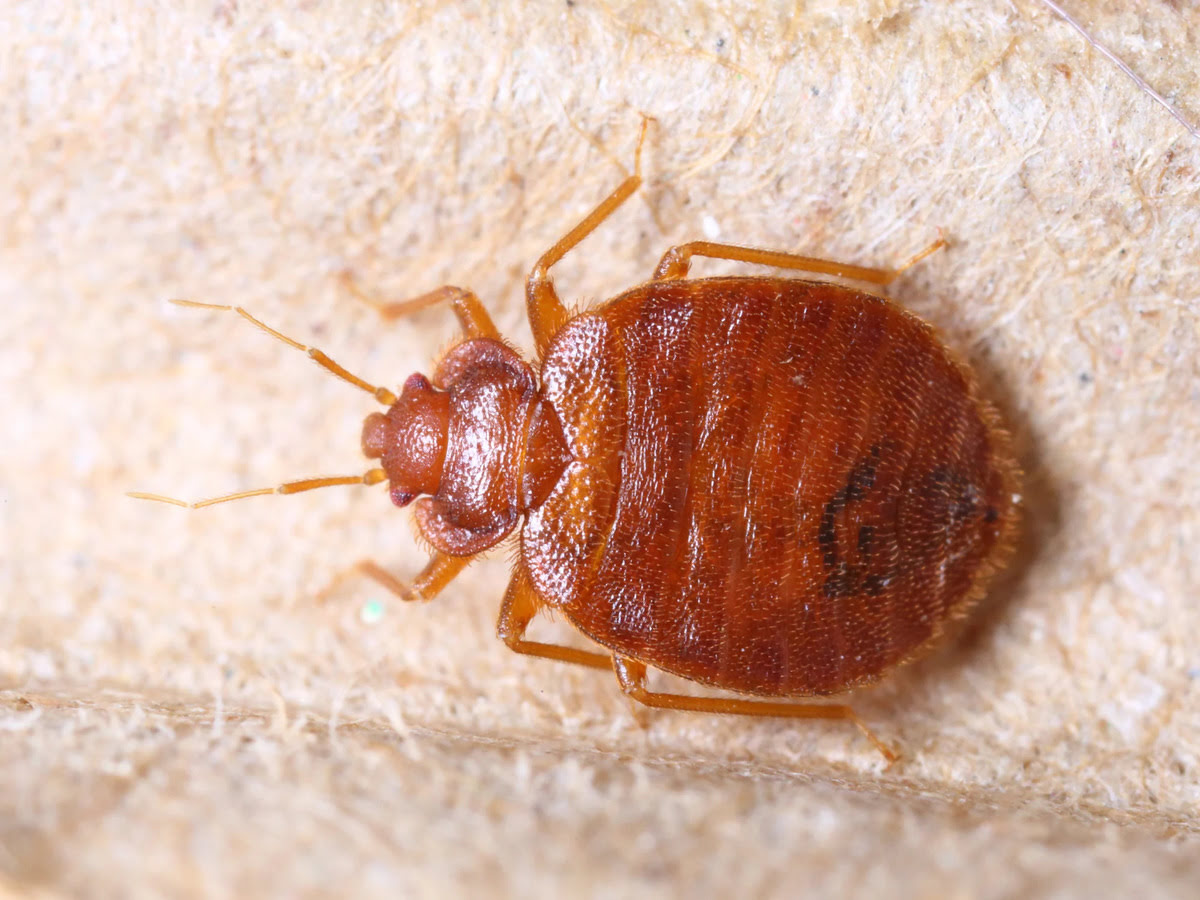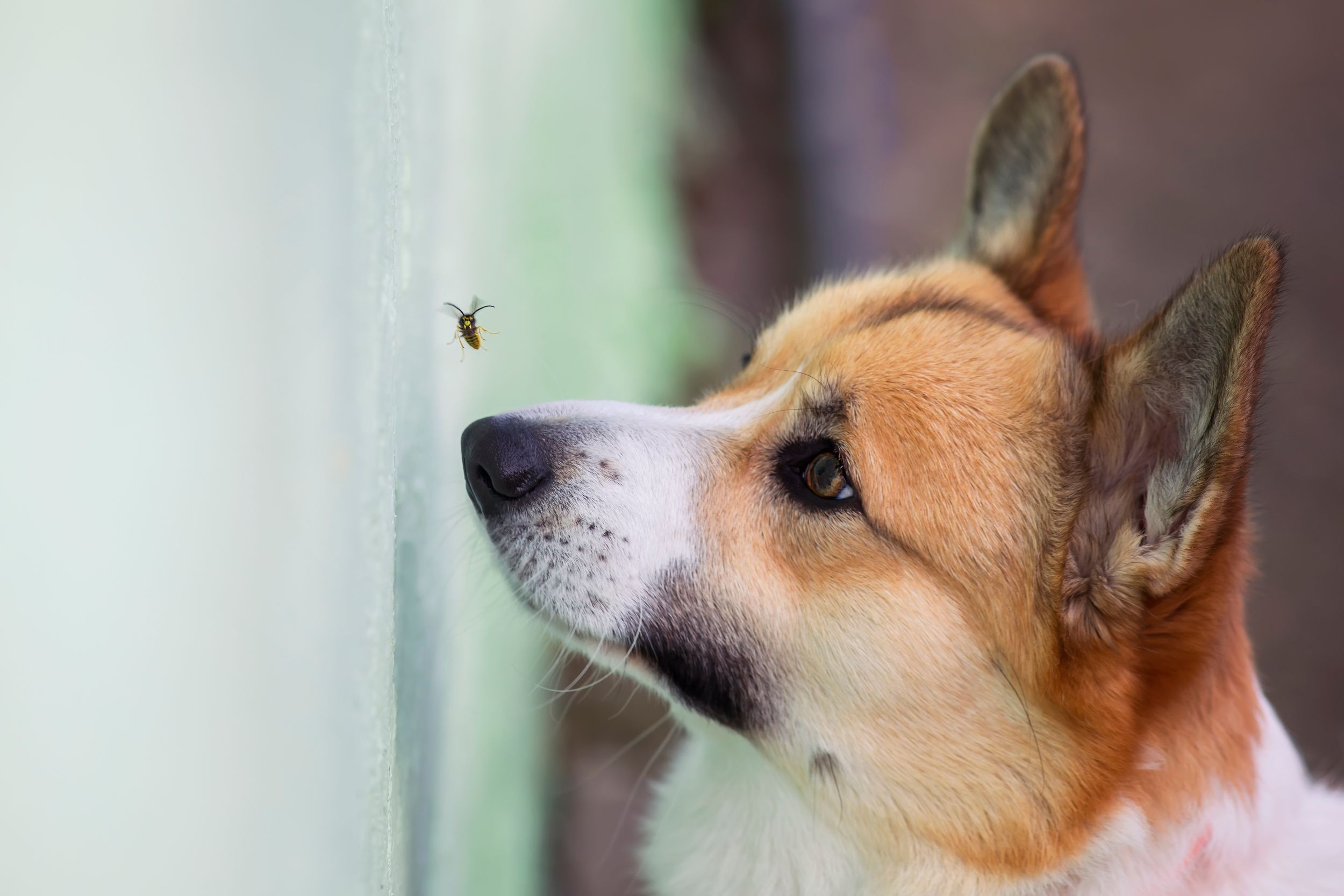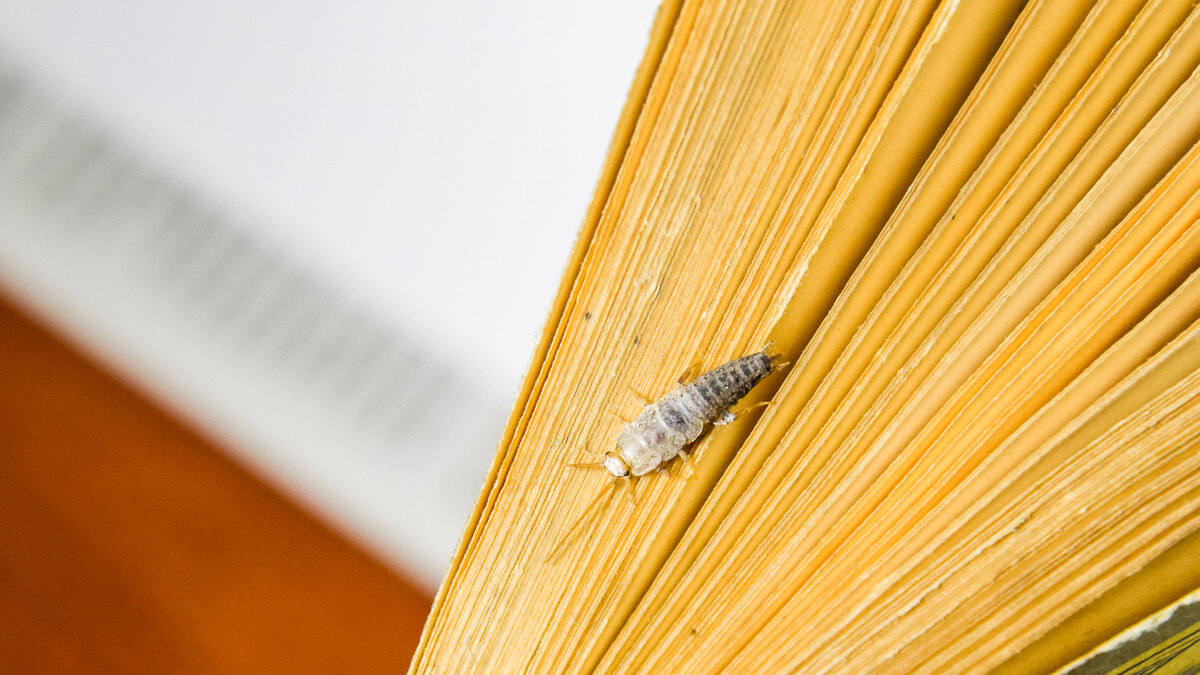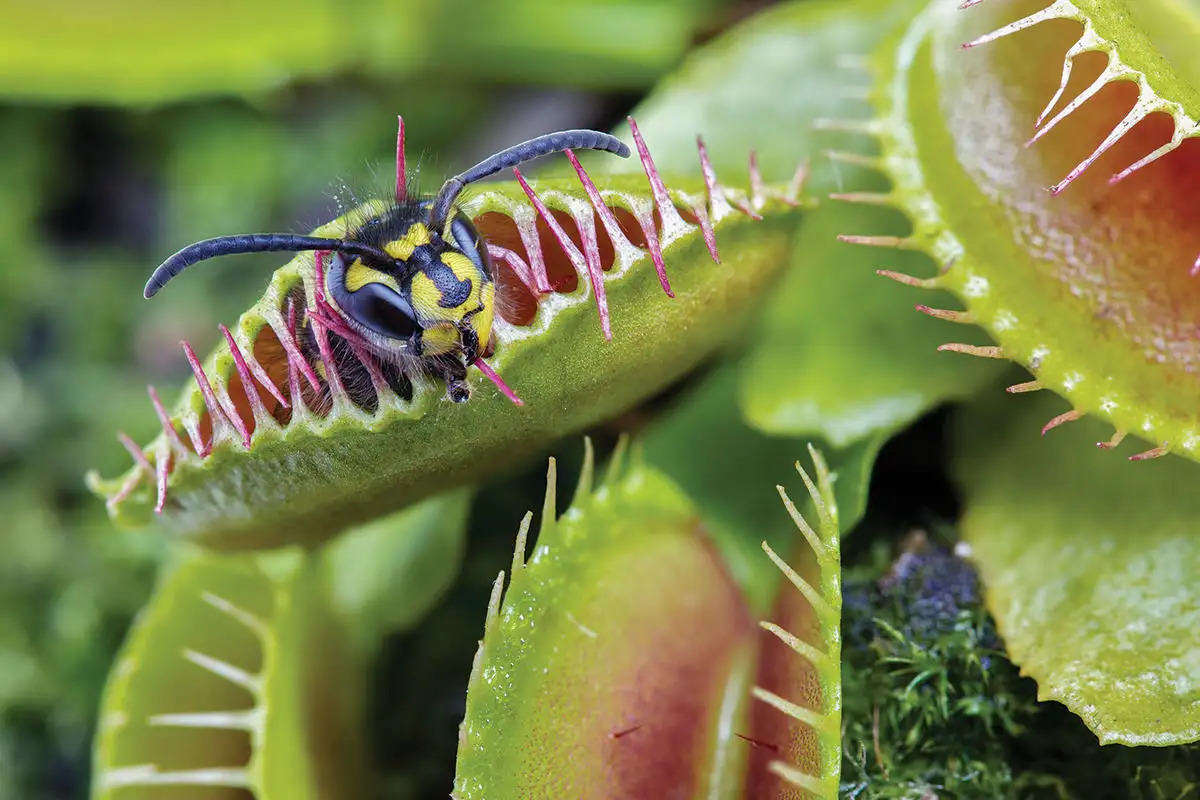Home>Gardening News and Trends>Latest News>Why Does Alcohol Kill Insects


Latest News
Why Does Alcohol Kill Insects
Modified: January 22, 2024
Discover the latest news on why alcohol is effective in killing insects. Learn about the mechanisms behind this phenomenon and the potential applications in pest control.
(Many of the links in this article redirect to a specific reviewed product. Your purchase of these products through affiliate links helps to generate commission for Chicagolandgardening.com, at no extra cost. Learn more)
Table of Contents
Introduction
When it comes to combating pesky insects, we often turn to chemical insecticides to get the job done. However, there is another surprising substance that has been found to be effective in killing insects – alcohol. Yes, you heard that right – the same alcohol that we consume for recreational purposes can actually be used as an insecticide.
Alcohol has long been known for its disinfectant properties, killing bacteria and viruses on surfaces. But its effectiveness extends beyond just microbial organisms. Insects, with their delicate bodies and sensitive nervous systems, are also vulnerable to the lethal effects of alcohol.
This fascinating synergy between alcohol and insects may come as a surprise to many, but it opens up a new avenue for pest control that is relatively safe and easily accessible. In this article, we will delve into the mechanisms by which alcohol affects insects’ nervous systems, explore the methods of using alcohol as an insecticide, discuss its effectiveness, limitations, and potential environmental impacts.
Before we dive into the details, it is important to note that using alcohol as an insecticide should always be approached with caution. It is essential to follow proper safety guidelines and use the recommended concentrations and application methods to minimize any potential risks.
Alcohol and Insects: An Unexpected Connection
When we think of alcohol, we usually associate it with socializing, celebrations, and relaxation. The idea that it can also be used to kill insects may seem counterintuitive. However, the relationship between alcohol and insects is more complex than meets the eye.
Insects, like any other living organisms, have intricate systems that allow them to navigate their environment and carry out essential functions. This includes their nervous system, which plays a crucial role in coordinating their movements, sensing stimuli, and ensuring their survival.
Alcohol has the ability to disrupt the functioning of an insect’s nervous system. When insects come into contact with alcohol, it can permeate their bodies, affecting neurons and neurotransmitters responsible for transmitting signals and controlling various physiological processes.
Interestingly, the effects of alcohol on insects are similar to its effects on humans. In both cases, alcohol can impair motor coordination, cause confusion, and eventually lead to paralysis and even death. However, whereas humans have developed a tolerance to the effects of alcohol, insects have not, making them highly vulnerable to its toxic properties.
It is important to note that not all insects are equally affected by alcohol. Some species are more resistant to its effects, while others are highly susceptible. Factors such as the insect’s size, physiology, and exposure levels can influence the degree of harm inflicted by alcohol.
This unexpected connection between alcohol and insects has opened up new possibilities for pest control. While traditional chemical insecticides can have detrimental effects on human health and the environment, alcohol-based insecticides offer a safer alternative.
In the next section, we will explore in more detail how exactly alcohol affects the nervous system of insects, shedding light on the mechanisms behind this surprising connection.
How Alcohol Affects Insects’ Nervous System
Alcohol’s impact on insects’ nervous systems lies in its ability to disrupt the functioning of neurons and neurotransmitters. Neurons are specialized cells that transmit electrical signals throughout an organism’s body, while neurotransmitters are chemical messengers that allow these signals to be relayed between neurons.
When insects come into contact with alcohol, it can enter their bodies through their spiracles (tiny breathing tubes) or be absorbed through their exoskeleton. Once inside, alcohol can reach the insect’s nervous system, where it starts to have its effects.
Alcohol primarily affects two key neurotransmitters in insects: gamma-Aminobutyric acid (GABA) and N-methyl-D-aspartate (NMDA) receptors. GABA is an inhibitory neurotransmitter that regulates neuronal activity and helps maintain balance and control in an insect’s nervous system. Alcohol enhances the effects of GABA, leading to an overstimulation of inhibitory signals, which ultimately disrupts normal neuronal communication.
NMDA receptors, on the other hand, are involved in learning and memory processes. Alcohol inhibits the normal functioning of these receptors, impairing an insect’s ability to process and remember information. This can have significant consequences for their survival, as it hampers their ability to learn and adapt to changing environments.
Furthermore, alcohol can also interfere with the reuptake and metabolism of neurotransmitters, further disrupting the balance of neuronal activity in insects. This disruption can lead to a loss of coordination, paralysis, and eventually, death.
The effects of alcohol on insects’ nervous systems can vary depending on several factors, including the insect species, the concentration and duration of alcohol exposure, and the specific neurological pathways affected. Some insects may show immediate effects, while others may experience delayed responses.
In addition, certain insects have developed mechanisms to counteract and detoxify alcohol. For example, fruit flies produce enzymes that break down alcohol, allowing them to tolerate higher concentrations compared to other insect species. This natural resistance can pose challenges when using alcohol as an insecticide, as higher concentrations may be required to effectively eliminate these resilient pests.
Understanding how alcohol affects insects’ nervous systems is essential for developing effective and targeted alcohol-based insecticides. By disrupting the crucial functions of neurons and neurotransmitters, alcohol effectively incapacitates insects, providing a means of controlling pest populations.
In the next section, we will explore the different mechanisms and methods by which alcohol can be utilized as an insecticide.
Killing Insects with Alcohol: Mechanisms and Methods
Using alcohol as an insecticide involves understanding the mechanisms by which it can effectively kill insects and implementing the appropriate methods for application. There are several approaches to utilizing alcohol for insect control:
Direct Contact: One of the simplest methods is direct contact with alcohol. This involves spraying or applying alcohol directly onto the insects or their habitats. The alcohol penetrates their bodies, disrupting their nervous systems and ultimately leading to paralysis and death.
Bait Stations: Another approach is to use alcohol-laden bait stations. These devices attract insects using substances that they are naturally attracted to, such as sugars or pheromones. Once the insects come into contact with the bait, they are exposed to the alcohol and its lethal effects.
Fumigation: Fumigation involves creating an atmosphere saturated with alcohol vapors. This method is particularly effective for targeting flying insects or insects in enclosed spaces. The alcohol vapor is inhaled by the insects, reaching their nervous systems and causing rapid paralysis and mortality.
Soaking or Immersion: Some insects, such as insects infesting stored grains or furniture, can be controlled by soaking or immersing the affected items in alcohol. This ensures thorough exposure to alcohol, eliminating the pests at all lifecycle stages, including eggs, larvae, and adult insects.
Injection: In certain situations, such as dealing with wood-boring insects or pests that are hidden within plant stems, injecting alcohol directly into the affected areas can be an effective method. The alcohol enters the insects’ bodies, rapidly incapacitating and killing them.
It is important to note that the concentration of alcohol used in these methods must be carefully considered. While high concentrations may provide faster and more potent effects, they can also pose higher risks to humans, animals, and the environment. Therefore, it is crucial to follow recommended guidelines and use appropriate dilutions to ensure safe and effective insect control.
Furthermore, improper application or over-reliance on alcohol-based insecticides can potentially lead to insect resistance. Insects, like other organisms, have the ability to adapt and develop resistance to substances that are repeatedly used against them. Therefore, it is advisable to rotate or combine alcohol with other insecticidal compounds to mitigate the risk of resistance and maximize control efficacy.
In the following section, we will discuss the effectiveness and limitations of alcohol as an insecticide, shedding light on its potential applications and considerations.
Effectiveness and Limitations of Alcohol as an Insecticide
Alcohol has shown promising effectiveness as an insecticide, particularly against certain species of insects. Its ability to disrupt the nervous system and cause paralysis makes it a viable option for pest control. However, there are several factors that influence its overall effectiveness and limitations:
Targeted Insects: Alcohol-based insecticides have been found to be particularly effective against small-bodied insects with delicate exoskeletons, such as aphids, mites, and fruit flies. These pests have a higher susceptibility to alcohol due to their small size and less developed detoxification mechanisms.
Exposure Time: The duration of alcohol exposure plays a significant role in its effectiveness. Extended exposure time allows the alcohol to fully penetrate the insects’ bodies and disrupt their nervous systems, resulting in a higher mortality rate. However, some insects may require longer exposure periods or multiple applications to achieve desired control.
Concentration: The concentration of alcohol used is crucial in determining its efficacy. Higher concentrations generally provide faster and more potent effects. However, it is important to strike a balance, as excessively high concentrations can be harmful to humans, animals, and plants. Following recommended guidelines for dilution is essential for safe and effective application.
Environmental Factors: Various environmental factors can affect the effectiveness of alcohol-based insecticides. Temperature, humidity, and airflow can impact the evaporation rate of alcohol and determine its availability to the insects. Additionally, certain surfaces or materials may absorb or repel alcohol, affecting its efficacy in exterminating pests.
Resistance Development: Like any other insecticide, over-reliance on alcohol-based treatments can lead to the development of resistance in insect populations. Insects can adapt and develop mechanisms to detoxify or tolerate alcohol over time. To mitigate this risk, it is advisable to rotate or combine alcohol with other insecticidal compounds, employing integrated pest management strategies.
Non-selective Nature: Alcohol-based insecticides are generally non-selective, meaning they can harm beneficial insects along with pests. This can disrupt the balance of ecosystems and affect pollination, natural pest control, and other beneficial interactions. Careful application and targeting specific pest areas can help minimize collateral damage to non-target organisms.
While alcohol-based insecticides have their limitations, they offer an alternative to traditional chemical insecticides, which can have detrimental effects on human health and the environment. The proper use of alcohol, following safety guidelines and taking into account specific insect species and conditions, can provide effective and relatively safe pest control measures.
In the next section, we will explore the potential environmental impacts of alcohol-based insecticides and the importance of responsible application.
Potential Environmental Impacts of Alcohol-based Insecticides
While alcohol-based insecticides offer a safer alternative to traditional chemical insecticides, it is important to consider their potential environmental impacts. Although alcohol is generally considered to be less harmful to the environment, there are still factors to be mindful of:
Non-Target Organisms: Alcohol-based insecticides have the potential to harm non-target organisms, including beneficial insects, such as bees, butterflies, and ladybugs. These insects play important roles in pollination, natural pest control, and maintaining ecosystem balance. Careful application, focusing on target areas and avoiding blanket spraying, can help minimize the impact on non-target organisms.
Water Contamination: If alcohol-based insecticides are used near bodies of water or in areas with high water tables, there is a risk of contaminating water sources. Alcohol can potentially leach into the soil and infiltrate groundwater, affecting aquatic organisms and ecosystems. It is crucial to follow recommended application rates and avoid spraying near water sources to prevent water contamination.
Plant Damage: While alcohol-based insecticides are generally considered safe for plants, excessive concentrations or improper application can lead to plant damage. Alcohol can cause leaf burn, discoloration, and wilting if applied in high concentrations or under unfavorable conditions. It is important to conduct a small-scale test application before treating larger areas and closely monitor plant responses.
Residue Build-up: Alcohol-based insecticides can leave residues on treated surfaces, particularly when used in higher concentrations. These residues may persist for some time, potentially affecting other organisms that come into contact with them. Thoroughly rinsing or removing treated surfaces after the intended exposure period can minimize residue build-up and reduce potential risks.
Air Quality: When using alcohol-based insecticides in enclosed spaces or during fumigation, there is a potential for increased volatile organic compound (VOC) emissions. VOCs can contribute to poor air quality, leading to respiratory issues and environmental concerns. Ensuring proper ventilation and monitoring indoor air quality during application can help minimize the impact on human health and the environment.
Sustainability Considerations: The sustainability of alcohol-based insecticides lies in responsible use and consideration of other pest control methods. While alcohol can be effective, incorporating integrated pest management strategies, such as biological control, habitat modification, and cultural practices, can reduce reliance on insecticides altogether and promote long-term sustainability.
To mitigate potential environmental impacts, it is important to follow recommended application guidelines, consider alternative pest control methods, and prioritize the health and well-being of ecosystems. By taking responsible actions, we can harness the benefits of alcohol-based insecticides while minimizing harm to the environment.
In the next section, we will conclude our exploration of the use of alcohol as an insecticide, summarizing the key points and highlighting its potential as an alternative pest control solution.
Conclusion
The use of alcohol as an insecticide presents a fascinating and unexpected connection between a common household substance and pest control. Through its ability to disrupt insects’ nervous systems, alcohol can effectively paralyze and kill pests, providing a potentially safer alternative to traditional chemical insecticides.
While the effectiveness of alcohol-based insecticides is evident, it is important to recognize their limitations and consider the potential environmental impacts. Non-target organisms, water contamination, plant damage, residue build-up, and air quality are all factors that need to be carefully managed to ensure responsible application.
By understanding the mechanisms by which alcohol affects insects’ nervous systems and implementing appropriate application methods, we can harness its potential as an insecticide. Direct contact, bait stations, fumigation, soaking/immersion, and injection are all viable approaches for utilizing alcohol to control pests.
It is crucial to consider the concentration, exposure time, and environmental conditions when using alcohol-based insecticides. Following recommended guidelines and integrating other pest control strategies can help mitigate the risks of resistance development, collateral damage to non-target organisms, and water contamination.
Ultimately, the use of alcohol-based insecticides should be part of an integrated pest management approach. By combining alcohol with other methods like biological control, habitat modification, and cultural practices, we can create a more sustainable and comprehensive approach to pest control.
As we continually seek alternatives to chemical insecticides, the use of alcohol as an insecticide opens up new possibilities for effective and environmentally conscious pest management. With careful consideration, responsible application, and a focus on long-term sustainability, we can embrace the surprising connection between alcohol and insects to tackle pest infestations in a safer and more eco-friendly manner.






